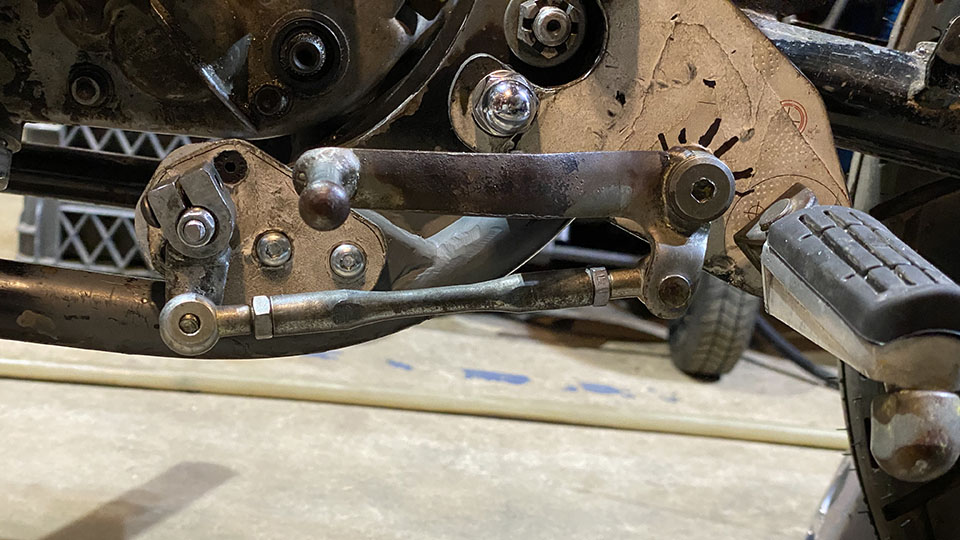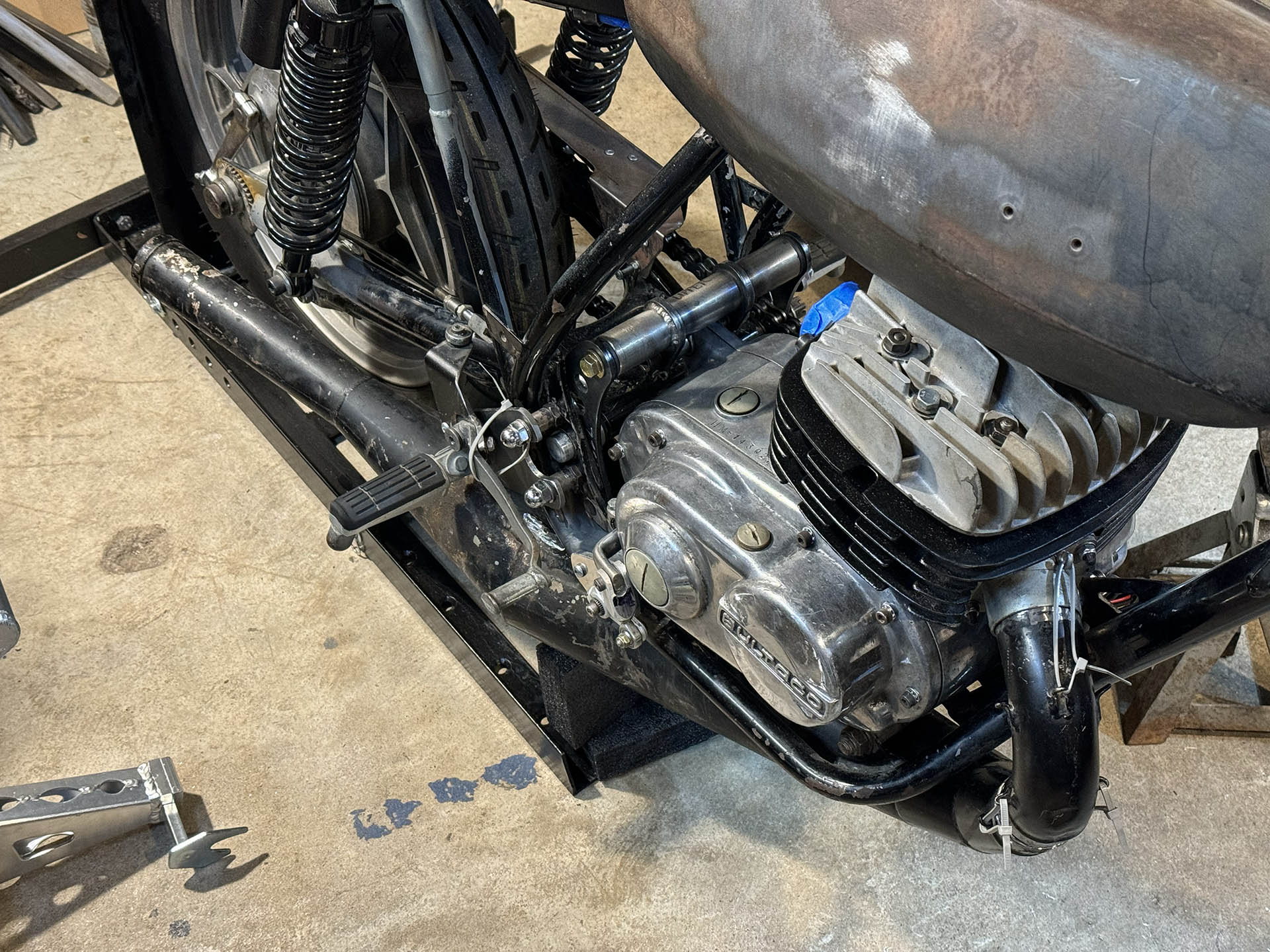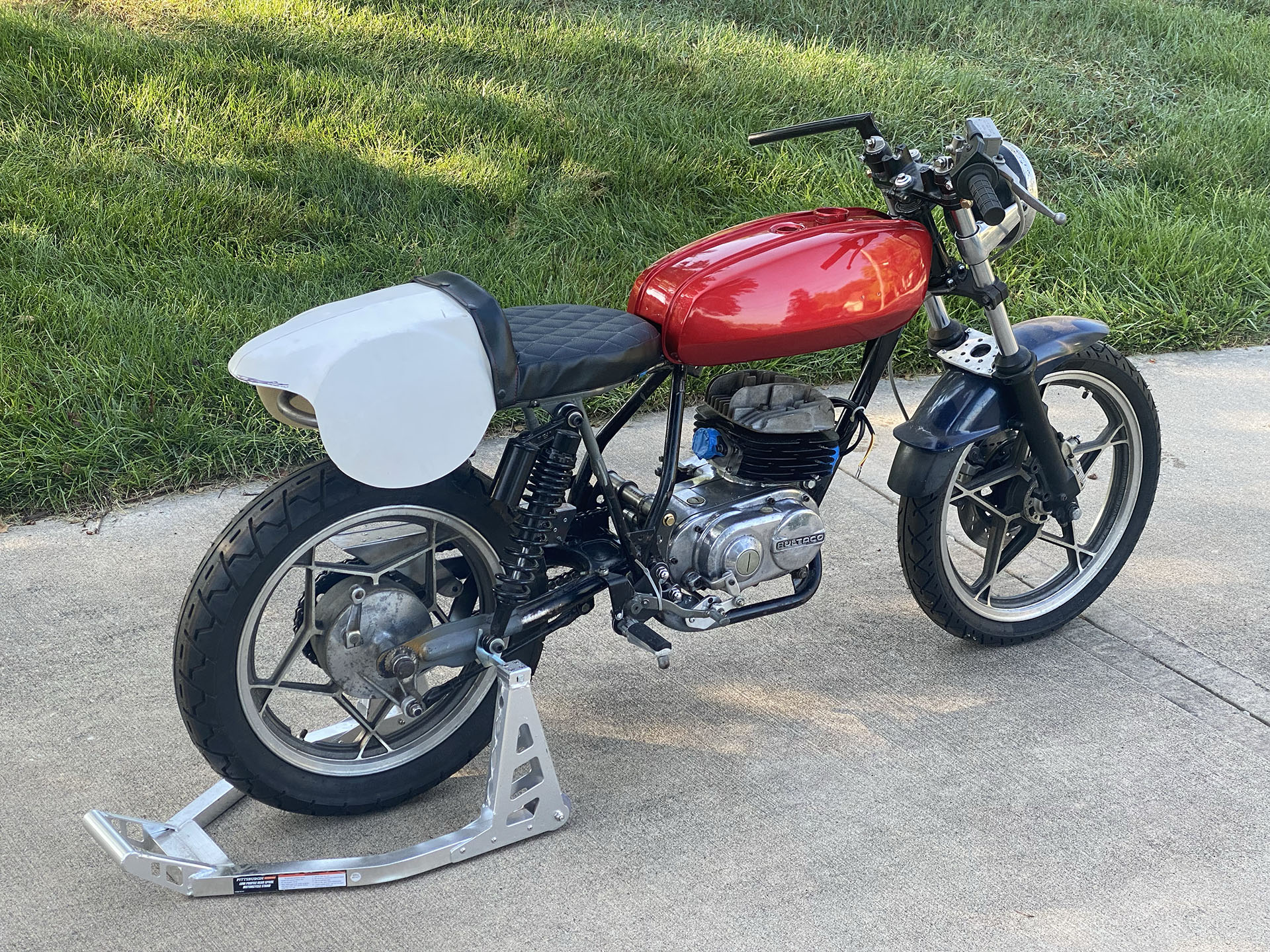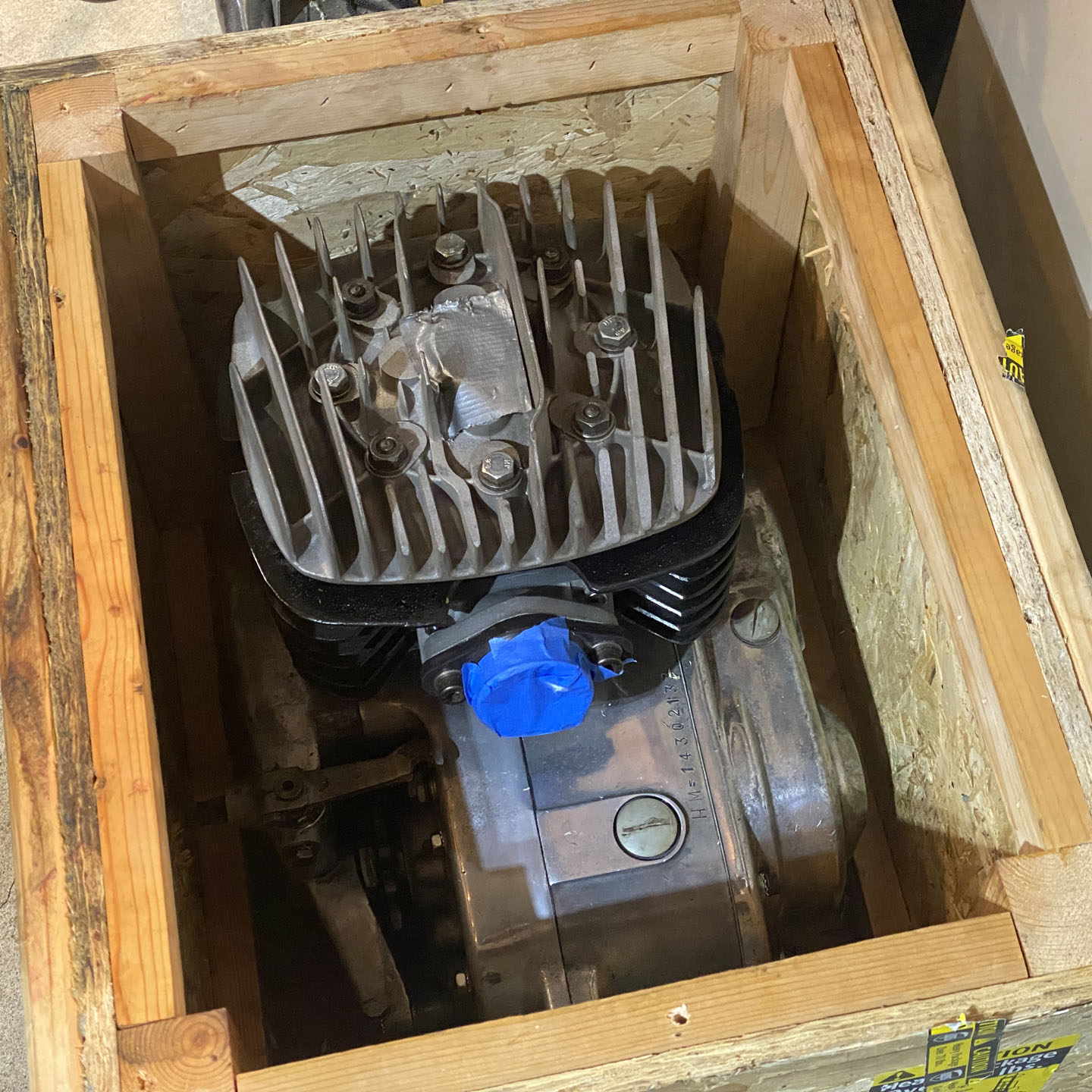It turns out my bolted-up cross-shaft design was fundamentally flawed. My father-in-law was a research chemist, and one of his favorite aphorisms was, “In theory, there’s no difference between theory and practice. In practice, there is.” It turns out that pushing your foot down on the shifter can exert a remarkable amount of torque to the threaded-together cross-shaft. Instead of a nice, positive stop, the limit of pedal travel instead devolves into an indistinct, mushy feel as threads begin to distort. After a number of upshifts and downshifts, either a) one of the threaded studs backs off and the whole assembly goes loose, or b) the lever rotates so far out of its original alignment the other way that the mechanism binds before upshifts or downshifts occur.

Here you can see a whole raft of index marks on the backing plate. Between upshifts and downshifts, I need the whole range of travel between when the rear of the pedal hits the footpeg and when the front rose joint binds against the bracket going forward. Bultacos are cantankerous, stone-age things with high-effort, balky shifting that requires a LOT of pedal travel.
I tried adding blue Loctite on the threads; it might as well have been apple butter for all the strength it added. Then I tried a dollop of JB Weld in the bottom of the internal shaft threads, thinking that would provide more positive resistance for the studs and magically stop the thread deformation. That was utterly ineffective, and one of the studs broke free within a few gear changes. I then switched to red Loctite 271 — effectively turning the self-aligning flange bearings and shaft into a single, non-disassemblable unit. I let the Loctite set-up and cure for a couple of days before I really mashed on the shift lever…
…and, oh, look! I’ve found the next-lowest stress failure mode!

Something new to discover every day.
I got out the propyline torch this morning and de-loctited all the parts, then chased the threads with a tap.
I thought about pinning things in place, but I really don’t have much concept of how robust it would need to be, i.e., suitable pin diameter (both absolute and relative to shaft dia.) and Pin construction (solid press or split tension pin).
I am trying to get over my intimidation over using the TIG welder, and psych myself up for welding the ends on. Unfortunately, one bodge-y aspect: the needle bearings will end up permanently captured on the shaft. But at this point, I am willing to live with that.


